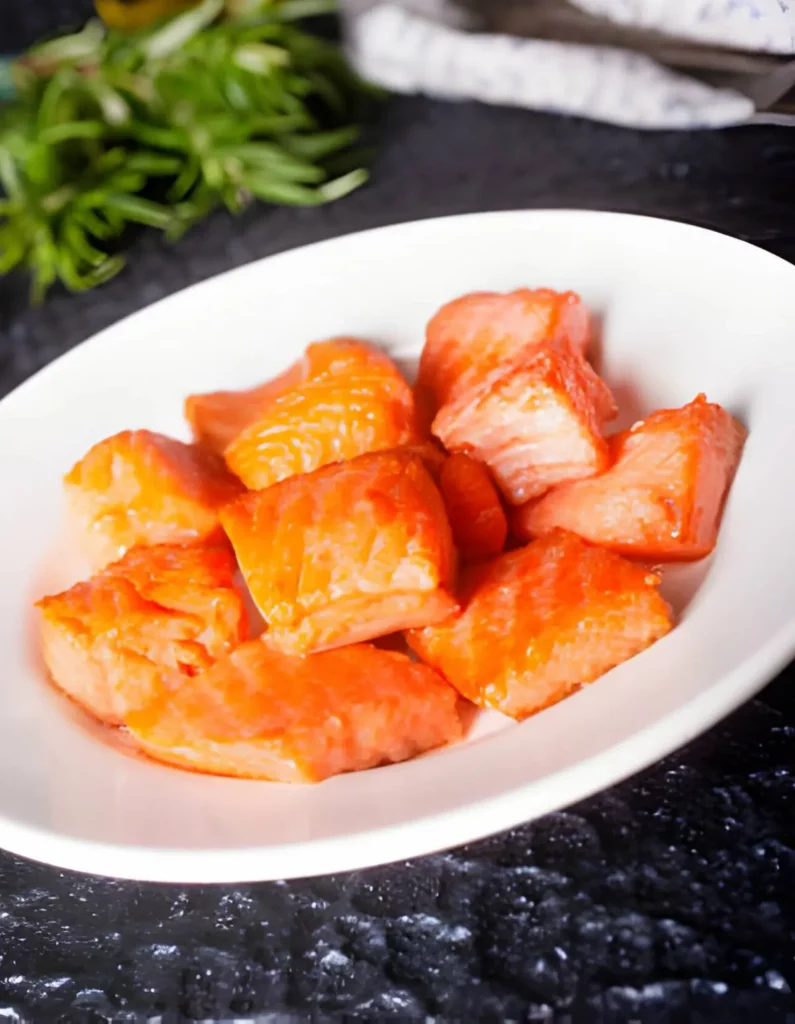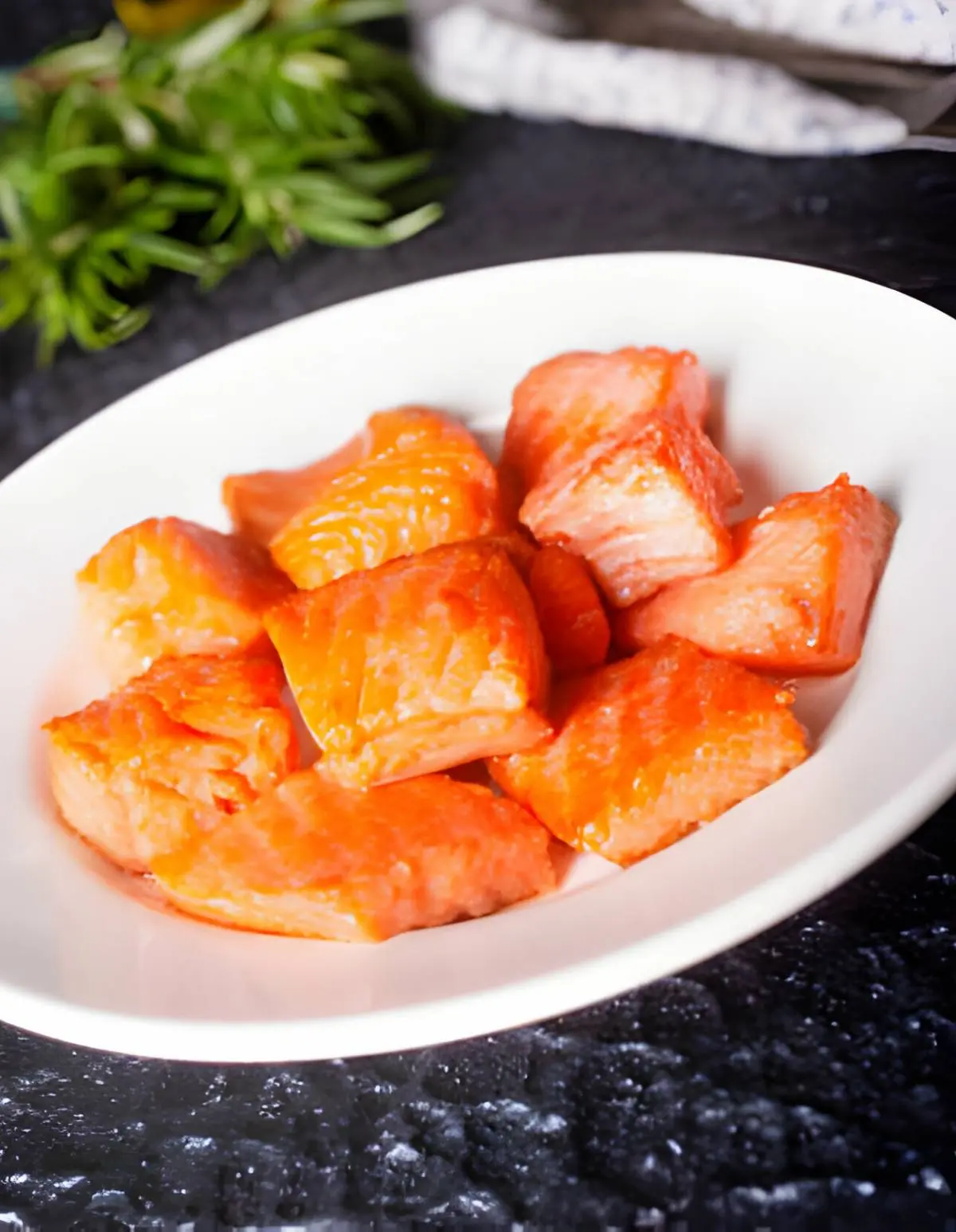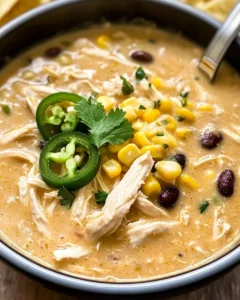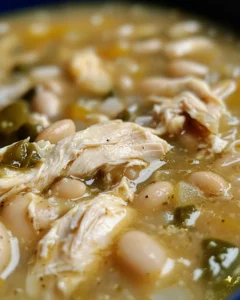In today’s fast-paced world, maintaining a healthy diet can be a challenge, especially when looking for quick and easy snack options. That’s where this Delicious Salmon Bites Recipe comes into play. Not only is it quick to prepare, but it also offers a wealth of health benefits, making it an ideal choice for anyone looking for a nutritious snack or appetizer. This article dives deep into how to prepare salmon bites, their health benefits, and variations you can try to keep your palate excited. Whether you’re a seasoned chef or a novice in the kitchen, this recipe is bound to impress with its simplicity and flavor.


Article Table
| Attribute | Details |
|---|---|
| Recipe Name | Delicious Salmon Bites |
| Preparation Time | 20 minutes |
| Cooking Time | 15 minutes |
| Total Time | 35 minutes |
| Ingredients | Salmon fillets, olive oil, lemon, herbs, spices |
| Servings | Serves 4 |
| Course | Snack/Appetizer |
| Cuisine | International |
The Recipe: salmon bites recipe
Ingredients:
- 1 pound of skinless salmon fillet
- 1 tablespoon of olive oil
- 1 teaspoon of garlic powder
- 1 teaspoon of smoked paprika
- Salt and pepper to taste
- Juice of 1 lemon
- Fresh dill for garnish
Instructions:
- Preheat your oven to 400°F (200°C) and line a baking sheet with parchment paper.
- Cut the salmon into 1-inch cubes and place them in a mixing bowl.
- Add olive oil, garlic powder, smoked paprika, salt, pepper, and lemon juice to the bowl. Gently toss to coat the salmon evenly.
- Arrange the salmon bites on the prepared baking sheet, ensuring they are not touching.
- Bake in the preheated oven for 12-15 minutes or until the salmon is fully cooked and flakes easily with a fork.
- Garnish with fresh dill before serving.
Health Benefits of Salmon:
- Rich in Omega-3 Fatty Acids: Essential for brain health and reducing inflammation.
- High-Quality Protein Source: Supports muscle repair and growth.
- Contains Antioxidants: Particularly astaxanthin, which benefits heart health.
Variations and Serving Suggestions:
- Spicy Salmon Bites: Add a dash of cayenne pepper or chili flakes to the seasoning mix for a spicy kick.
- Lemon Herb Salmon Bites: Incorporate a mixture of fresh chopped herbs such as parsley, dill, and chives with extra lemon zest for a fresh, herby flavor.
- Serving Suggestions: Serve these salmon bites with a side of light dipping sauces, over a bed of greens, or alongside a quinoa salad for a complete meal.
Frequently Asked Questions (FAQs):
Q: Can I use frozen salmon for this recipe?
A: Yes, you can use frozen salmon. Thaw it completely and pat it dry before seasoning.
Q: Are salmon bites suitable for meal prep?
A: Absolutely! Prepare a batch ahead of time, and you can enjoy them over a few days. They’re great for snacking or adding to salads and bowls.
Q: How can I ensure my salmon bites are moist and not dry?
A: Avoid overcooking the salmon. Keep an eye on it while it’s in the oven, and remove it as soon as it flakes easily with a fork.
Conclusion:
This Delicious Salmon Bites Recipe is more than just a treat for your taste buds; it’s a heart-healthy, protein-packed snack that’s both simple to make and incredibly versatile. Perfect for any occasion, from casual snacking to sophisticated appetizers, these salmon bites are sure to become a staple in your culinary repertoire. Happy cooking!
Tips for Perfect Salmon Bites Every Time:
Choosing the Right Salmon:
- Fresh vs. Frozen: Both can yield delicious results. Fresh salmon should have a vibrant color, moist texture, and a fresh sea smell. If using frozen, ensure it’s thoroughly thawed and patted dry to remove excess moisture.
- Wild vs. Farmed: Wild salmon is preferred for its flavor and nutritional profile, but responsibly farmed salmon can be a more affordable option.
Preparation Tips:
- Even Sizes: Cut the salmon into even sizes to ensure uniform cooking.
- Marination: Let the salmon marinate for at least 15 minutes to absorb the flavors fully, if time allows.
Cooking Techniques:
- Baking: A gentle, foolproof method that preserves the moisture and tenderness of the salmon. Preheating the oven is key.
- Pan-Searing: For a crispy exterior, you can also pan-sear the salmon bites over medium-high heat for 2-3 minutes on each side.
- Air Frying: A quick and healthier option, air fry the salmon bites at 400°F (200°C) for about 10 minutes, shaking the basket halfway through.
Pairings and Accompaniments:
Dips:
- Yogurt-Dill Sauce: A tangy complement to the rich salmon.
- Soy-Ginger Glaze: Adds an Asian flair to the bites.
- Spicy Aioli: For those who prefer a bit of heat.
Side Dishes:
- Cucumber Salad: Offers a refreshing crunch.
- Sweet Potato Fries: A sweet and savory side that pairs well with salmon.
- Quinoa Salad: A hearty and healthy option.
Storage and Reheating:
- Refrigeration: Store leftover salmon bites in an airtight container in the refrigerator for up to 3 days.
- Freezing: Freeze them on a baking sheet before transferring to a freezer bag. They can be reheated from frozen.
- Reheating: Warm in the oven at 350°F (175°C) for about 10 minutes or in the microwave on medium power for 1-2 minutes.
Nutritional Information:
- Calories: Approximately 200 per serving.
- Protein: 23g per serving.
- Fat: 12g per serving, with a significant portion coming from heart-healthy omega-3 fatty acids.
- Carbohydrates: Minimal; this recipe is low-carb.
Sustainability Considerations:
When choosing salmon, sustainability is a crucial factor. Look for certifications like the Marine Stewardship Council (MSC) for wild-caught fish or the Aquaculture Stewardship Council (ASC) for farmed salmon. These labels ensure that the salmon comes from sources that minimize environmental impact and support healthy fish populations.
Conclusion:
Crafting the perfect salmon bites is an art that combines the right choice of ingredients, proper preparation, and the ideal cooking method. This recipe not only promises a delicious snack but also delivers a nutritious boost to your diet. By following the tips provided, you can customize the recipe to suit your taste preferences and dietary needs, making it a versatile addition to your culinary repertoire. Whether you’re hosting a gathering, looking for a healthy snack, or simply want to add more omega-3s to your diet, these salmon bites are a perfect choice. Enjoy the process of cooking and the delightful flavors of your homemade salmon bites!
Additional Resources:
For more delicious recipes and cooking tips, visit [Your Website]. Here, you’ll find a treasure trove of information on how to make your meals healthier, tastier, and more varied, ensuring you never run out of ideas for your next kitchen adventure.
Elevating Your Cooking Skills with Salmon Bites
Cooking is not just about following a recipe to the letter; it’s also about experimenting and adjusting to fit your personal taste and nutritional needs. With this salmon bites recipe as a foundation, you have the opportunity to explore various culinary techniques, flavors, and presentations that can elevate your cooking skills and impress your guests or family.
Experimenting with Flavors
The versatility of salmon allows it to pair well with a wide range of flavors, from the subtle to the robust. Here are a few ideas to inspire your culinary creativity:
- Asian-Inspired: Combine soy sauce, sesame oil, ginger, and a hint of honey for a sweet and savory glaze. Garnish with sesame seeds and thinly sliced green onions.
- Mediterranean Twist: Use a mix of olive oil, lemon juice, garlic, and a blend of Mediterranean herbs like oregano, thyme, and basil. Serve with a side of tzatziki and warm pita bread.
- Cajun Style: Coat the salmon bites with a spicy Cajun seasoning before baking. Serve with a cool avocado-lime dip to balance the heat.
Mastering Cooking Techniques
Each cooking method brings out different qualities in the salmon, from the crispiness of pan-searing to the tenderness of baking. Here’s how you can master these techniques:
- Pan-Searing: Ensure the pan is hot before adding the salmon. This will create a crispy exterior while keeping the inside tender. Use a high-smoke-point oil like avocado or grapeseed oil.
- Baking: To keep the salmon moist, cover the baking sheet with foil for the first half of the cooking time. This traps steam and prevents the salmon from drying out.
- Grilling: Salmon bites can be skewered and grilled over medium heat. This adds a smoky flavor that’s perfect for summer barbecues.
The Art of Presentation
How you present your salmon bites can transform them from a simple snack into a gourmet treat. Here are some presentation tips:
- Skewers: Thread the salmon bites onto skewers, alternating with vegetables like bell pepper, onion, and cherry tomatoes for a colorful and appealing look.
- Plating: Use a white plate for contrast, and arrange the salmon bites atop a bed of greens or alongside a vibrant vegetable salad. Drizzle with your sauce of choice and garnish with fresh herbs or edible flowers.
- Serving Boards: For casual gatherings, arrange the salmon bites on a wooden serving board with various dips, crackers, and sliced vegetables. This encourages guests to mix and match flavors.
Nutritional Balance and Considerations
Incorporating salmon into your diet offers numerous health benefits, but it’s also important to consider overall nutritional balance. Pair the salmon bites with whole grains, fresh vegetables, and healthy fats to create a well-rounded meal. For those with dietary restrictions, salmon is naturally gluten-free and can be adapted to fit keto, paleo, and other diet plans with suitable accompaniments.
Engaging with the Culinary Community
Don’t hesitate to share your version of this salmon bites recipe on social media or cooking forums. Engaging with the culinary community can provide additional insights, feedback, and inspiration. Whether it’s a tweak to the seasoning or an entirely new cooking method, the collective knowledge of fellow food enthusiasts can push your culinary boundaries even further.
salmon bites recipe
Final Thoughts
This comprehensive guide to creating delicious salmon bites is just the beginning of your culinary adventure. By experimenting with flavors, mastering cooking techniques, and focusing on presentation, you can elevate this simple recipe into a signature dish that reflects your personal taste and culinary skills. Remember, the journey of cooking is about exploration, learning, and, most importantly, enjoying the process. Bon appétit! How do I know when salmon is done baking?
Embracing Seasonality and Sustainability in Your Cooking
As you become more comfortable and experimental with the salmon bites recipe, another important aspect to consider is the seasonality and sustainability of the ingredients you use. Embracing these concepts not only enhances the flavor and nutritional value of your dishes but also contributes to a more environmentally friendly and ethical approach to cooking.
Seasonal Cooking:
- Spring and Summer: Incorporate fresh herbs like dill, parsley, and chives, which are in abundance during these seasons. Fresh vegetables such as asparagus, peas, and cherry tomatoes make excellent sides or additions to your salmon bites.
- Fall and Winter: Opt for heartier accompaniments like roasted root vegetables or a warm quinoa salad with dried cranberries and nuts. Seasonal spices like paprika and cumin can add warmth and depth to the salmon’s flavor.
Sustainable Choices:
- Salmon Selection: Opt for wild-caught salmon from sustainable fisheries or farmed salmon that adheres to responsible aquaculture practices. Look for certifications and labels that indicate sustainable sourcing.
- Local and Organic: Whenever possible, choose local and organic produce to accompany your salmon bites. This supports local farmers and reduces the carbon footprint associated with transporting food over long distances.
Advancing Your Culinary Techniques
As you refine your skills with the salmon bites recipe, consider exploring advanced culinary techniques to further enhance the dish’s flavors and textures.
Sous-Vide Cooking:
- For those interested in precision cooking, preparing the salmon bites sous-vide ensures perfectly cooked, moist, and tender fish every time. Season the salmon, place it in a vacuum-sealed bag, and cook in a water bath at a precise temperature. Finish by quickly searing the bites for a crispy exterior. How long does it take to cook salmon at 400?
salmon bites recipe
Smoking:
- Smoking the salmon adds a deep, smoky flavor that’s hard to achieve with other cooking methods. Whether using a traditional smoker or a stovetop smoking method, the key is to choose the right wood chips (like alder or maple) that complement salmon’s natural flavors.
Creative Plating and Food Photography
In the age of social media, presenting and photographing your dishes has become an art form in itself. Here are a few tips for showcasing your salmon bites beautifully:
- Lighting: Natural light is your best friend for food photography. Take photos near a window with indirect light to highlight the textures and colors of your dish.
- Composition: Play with different arrangements and use props like utensils, napkins, or ingredients to add interest to your photos. Remember, less is often more.
- Focus and Angle: Depending on the dish’s features, decide whether a top-down shot or a side angle makes the most of its visual appeal. Use focus to draw attention to the most important part of the dish.
Salmon Bites Recipe
Sharing Your Culinary Journey
Documenting and sharing your culinary adventures with salmon bites can inspire others and lead to a rewarding exchange of ideas. Whether through a blog, social media, or online forums, sharing recipes, tips, and photographs can connect you with a global community of food lovers.
- Engagement: Ask questions, solicit feedback, and engage in conversations with your audience. This two-way interaction can provide new insights and ideas for future culinary experiments.
- Collaboration: Look for opportunities to collaborate with other food enthusiasts. This could be through guest posts, recipe swaps, or joint cooking sessions.
Reflecting on Your Culinary Growth : Salmon Bites Recipe
As you experiment with the salmon bites recipe and incorporate new techniques, flavors, and presentations, take a moment to reflect on your growth as a cook. Each iteration of the recipe is a step in your culinary journey, reflecting your creativity, learning, and passion for food. Celebrate your successes, learn from the challenges, and most importantly, enjoy the delicious outcomes of your efforts.


